Bone-tendon circumference might make a horse look strong, but real durability comes from density, remodeling, and smart conditioning—not just thick limbs and flashy photos. Here’s what builds bone that lasts.
“He’s got good bone.”
Translation: “His legs look like fence posts.”
Reality? That doesn’t mean jack sh*t for long-term durability.
Bone-tendon circumference (BTC) is the girth measurement taken just below the knee or hock, capturing the cannon bone and surrounding soft tissues. It’s often used to estimate limb substance—but it’s a misleading metric when it comes to soundness. Bone building for horses isn’t about circumference—it’s about remodeling, resistance, and reality. Here’s what actually builds lasting soundness.
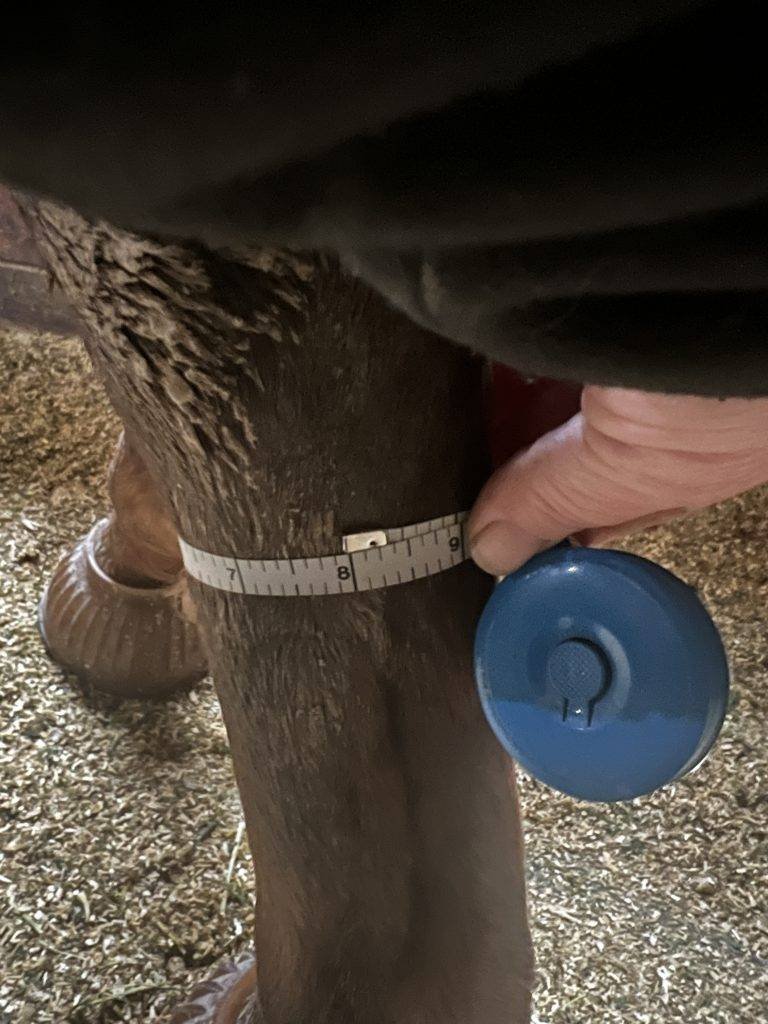
What Bone-Tendon Circumference Can Indicate:
- A large cannon bone
- Developed tendons and ligaments
- Visual symmetry in the limbs
But Here’s What It Doesn’t Prove:
- Bone mineral density (BMD)
- Cortical thickness
- How that limb remodels under stress
- Resistance to injury over time
BTC is like judging a pipe by its diameter—without knowing if it’s solid steel or hollow PVC.
“Bone circumference alone is not predictive of strength unless paired with mineral density and mechanical loading history.” — Greve et al., 2014
“Bone thickens into the 5th year, but real strength only comes with stress-induced remodeling.” — Bennett, n.d.; Lawrence, 2005
🚫 Arena Work ≠ Bone Remodeling
Jogging and loping on soft, fluffy arena footing 6 days a week? That’s cardio—not cortical bone development.
Ride for 20–60 minutes then stall them for 23 hours? You’re not building durability—you’re undoing progress.
Bone is a use-it-or-lose-it tissue, even in mature horses. Research shows stall rest for 10–14 days reduces bone density—starting in the trabecular bone and eventually impacting the cortical layers (Firth, 2006; Logan & Nielsen, 2021).
Walking or standing around doesn’t cut it. The strain required to stimulate remodeling is ~1000 microstrain—a level you only reach through impact work like trotting, galloping, or breezing on firm ground.
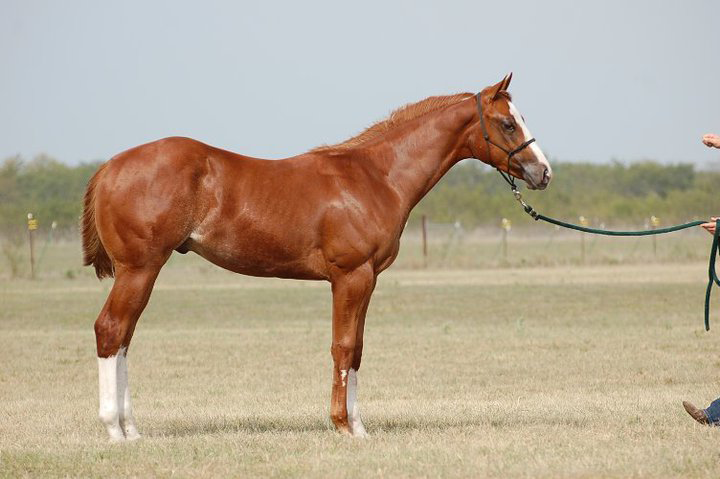
💥 Want Durable Bone? Do This Instead:
- Sprint, long-trot, gallop, lope, and jog—in straight lines
- Work over firm terrain (grass, hard dirt, manure track—not deep sand)
- Incorporate resistance (pony off a Gator, pull a tire)
- Use intervals: work + rest = adaptation
- Start early, progress gradually
- Know that bone takes ~120 days to remodel
“Bone grows wide through age 5, but if there’s no stress, there’s no structure.” — Dr. Deb Bennett
“Real remodeling only happens with high-impact, cyclic loading—not cushy, repetitive movement.” — Firth, 2006
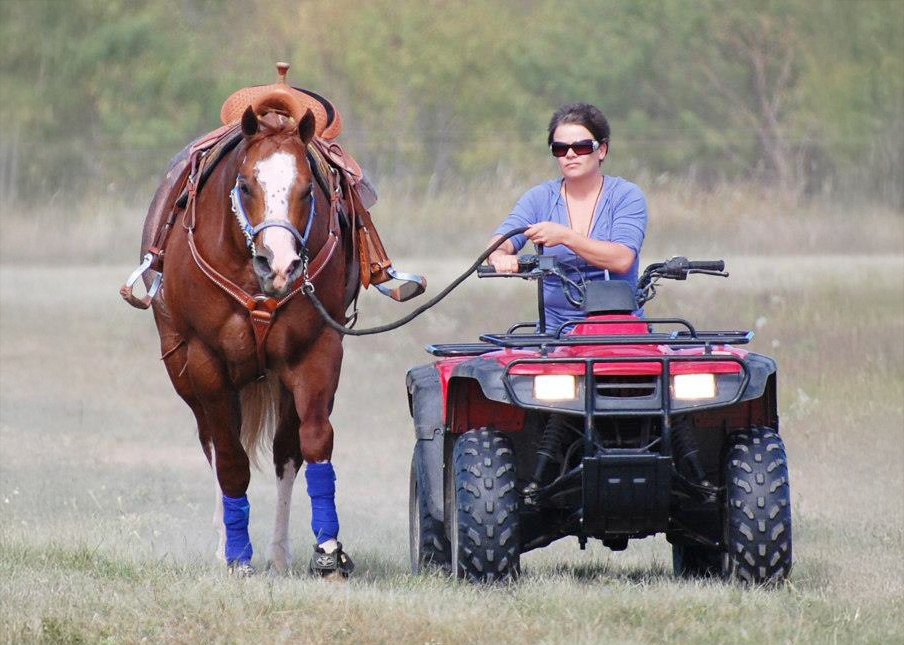
💪 The Equine P90X Program: Real Conditioning for Show Horses
This is for stock horses headed to the pen—halter, ranch, pleasure, cow horse. Not race prep. Here’s a sample:
- Week 1: 3 min trot + 2 min gallop + 1 min jog
- Week 6: 6 min trot + 4 min gallop + 2 min lope
- Week 12: 10 min lope + 4 min gallop + 4 min jog
Footing rotation: grass → manure track → shallow sand → hard-packed dirt
No longeing. No circles. No deep footing.
Yes to: straight lines. Resistance. Intervals. Recovery.
“Lunging in deep sand doesn’t build bone—it builds vet bills.”
Raub et al. (1989) found that yearlings trotted on firm ground developed 25% more bone mineral content than stalled horses.
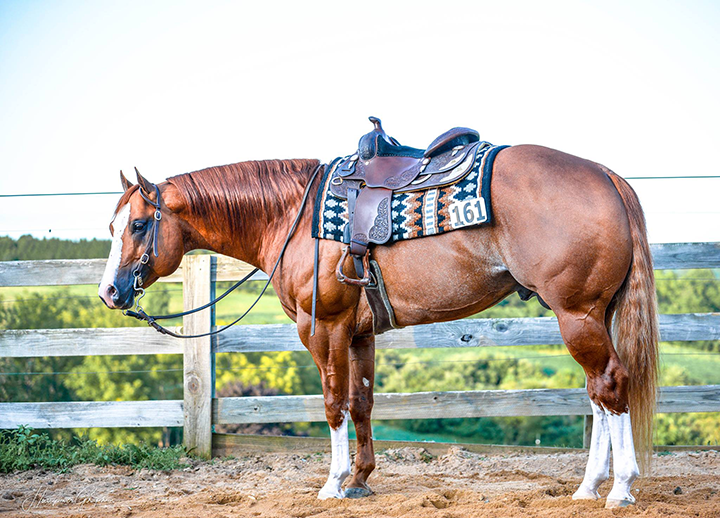
❌ Fitting Myths That Cost You Soundness
Hot walkers, euro-cisers, and circles on circles? That’s fluff. Not fitness. You end up with fat, glossy yearlings—but no cardiovascular foundation or remodeled bone.
You paid for a pretty package of BS. Horses in pastures run straight, jump logs, and self-load their limbs. That’s the natural blueprint for durability.
- Fewer circles = fewer injuries
- Fewer injections = more soundness
- More sprinting = more bone
💉 Repeated Joint Injections = Accelerated Breakdown
In performance barns, it’s routine:
- “Inject the hocks.”
- “Stifle’s due.”
- “Keep him going until Finals.”
Let’s get real: Corticosteroids make them feel sound—but the damage continues underneath.
What They Actually Do:
- Reduce cartilage quality
- Thin joint surfaces
- Weaken subchondral bone
- Suppress pain while degeneration builds
(Massey et al., 2011; Firth, 2006)
Then Add 23 Hours of Stall Time Per Day:
- No natural loading
- No remodeling
- No synovial stimulation
Result: Early breakdown. Chronic lameness. Premature retirement. Ask my rotator cuff—same issue, different species.
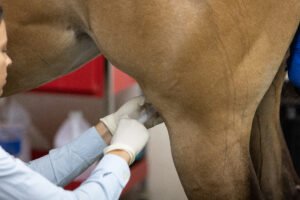
✅ The Smarter Plan:
- Inject only when truly needed—not on schedule
- Use pasture rest—if you’ve got the patience
- Condition them before problems appear
- Train with terrain, intervals, progressive stress
- Focus on adaptation—not pain management
🥩 Nutrition Supports Bone—Strain Builds It
- 2:1 calcium-to-phosphorus ratio
- Trace minerals: copper, zinc, manganese
- Forage-first, low-sugar feed
- B12 + protein after workouts
You can’t fix bad fitting with a mineral tub.
⚖️ Final Takeaway: Circumference vs. Strength
You can breed it. You can feed it. You can wrap it in neoprene and bathe it in IceTight.
But if you’re not loading it, you’re not building it.
Durable horses aren’t made in fancy stalls. They’re built in motion—with time, terrain, tensile stress, and science.
You’re not preventing anything with injections—you’re just fast-tracking breakdown to meet a deadline.
📚 References:
Firth, E. C. (2006). The response of bone, articular cartilage and tendon to exercise in the horse. Journal of Anatomy, 208(4), 513–526. https://doi.org/10.1111/j.1469-7580.2006.00547.x
Raub, R. H., Jackson, S. G., & Baker, J. P. (1989). Effects of exercise on bone growth and development in weanling horses. Journal of Animal Science, 67(2), 506–514. https://doi.org/10.2527/jas1989.672506x
Greve, L., Dyson, S. J., & Pfau, T. (2014). The interrelationship of lameness, saddle slip and back shape in the general sports horse population. Equine Veterinary Journal, 46(6), 687–694. https://doi.org/10.1111/evj.12222
Bennett, D. (n.d.). The Ranger Piece. Equine Studies Institute.
No DOI available.
Lawrence, L. M. (2005). Effects of exercise and training on skeletal development in horses. Proceedings of the Kentucky Equine Research Conference.
No DOI available.
Massey, P. D., et al. (2011). Intra-articular corticosteroids: a review of use and misuse in performance horses. AAEP Proceedings.
No DOI available.

Leave a Reply